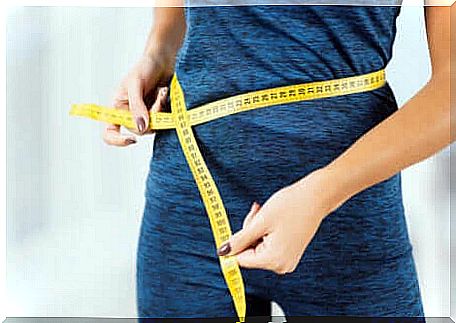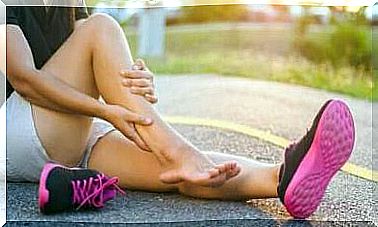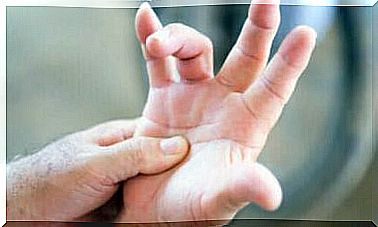The Utility Of Waist Circumference Determination

The optimal waist size is more important than aesthetics alone. This is because accumulated fat in this part of the body is a cardiovascular risk factor. All you have to do to determine your own waist circumference is to measure yourself around the waist, at the height of the navel.
This measurement is easy to perform. The question is, however, what is the limit of the optimal waist size that we should not exceed. The World Health Organization (WHO) states that the number should not exceed 88 cm in women and 102 cm in men.
The risks of an excessively large waist circumference

Being obese is a warning sign of an increased cardiovascular risk. This risk skyrockets if the optimal waist circumference exceeds the limits that are considered healthy.
There is already an increased risk for heart disease when the extra pounds are evenly distributed over different parts of the body. However, it increases when the abdominal area accumulates more fat than other parts of the body.
This is because intra-abdominal adipose tissue contains cells called adipocytes. These sheets produce a certain amount of hormones and pro-inflammatory substances.
Such adipocytes also release free fatty acids, which the liver then metabolizes and uses as an energy source instead of glucose. As a result, the sugar that is not used by the liver accumulates in the body. This process increases blood glucose levels and in addition blood lipid levels become very high.
When you read it that way, you understand why a bulging belly is a problem that goes beyond just aesthetics. Among other things, it can lead to the metabolic syndrome which is characterized by an increase in bad cholesterol and triglycerides. In addition, this leads to a reduction in good cholesterol, an increase in blood pressure and hyperglycemia.
How can you measure the waist circumference?
A tape measure and some tips are all you need to determine the waist size. Doctors in some countries often determine waist circumference during a routine medical checkup.
They also do it when they notice an increase in body mass index (BMI) toward being overweight or obese (Spanish link). How is your waist size determined correctly? Below we give you the instructions you need for this:
- You should stand up straight, with your arms at your sides.
- Then, if present, loosen your belt and remove the garments covering your torso.
- Place the tape measure under the rib cage and above the top of the hip bone, around the skin at the level of the navel.
- Relax the abdomen and exhale before putting on the measuring tape.
- Write the number down immediately so you don’t lose or forget the information.
Types of overweight

There are two types of obesity, depending on where the excess fat is stored:
- The first form of overweight is called peripheral obesity (Spanish link). This is when the obesity is in the thighs, buttocks and hips. We also call this a peer figure.
- The other form is central obesity. This is the case when the excess fat is located almost exclusively at the height of the abdomen. This model is also called the apple figure.
People with central obesity are twice as likely to develop cardiovascular disease (Spanish link). However, keep in mind that excess fat is always harmful, regardless of location.
Some very important organs are located in the abdomen such as the liver, stomach, spleen and gallbladder. These are the organs that suffer from the activity of belly fat. In women, the hormonal changes during menopause contribute to changes in body structure (Spanish link).
What to do if the waist circumference is larger than it should be?
- To avoid the increase of fat in the abdominal area, it is advisable to have a healthy lifestyle. This includes sufficient exercise.
- Professionals recommend aerobic training in combination with strength exercises (Spanish link). The first contribute to the consumption of calories and the second strengthen the muscles and improve posture.
- Following a healthy diet with as little saturated fat and simple sugars as possible helps to keep weight under control. Plus, this type of diet is good for your heart.
- In addition, hydration is an important factor, as it supports your bodily functions and may help prevent fluid retention.
- A good night’s sleep not only provides energy but also relieves stress and improves hormonal function.
- Finally, posture is important (Spanish link). It is not recommended to sit with a bent spine for many hours. This position promotes the relaxation of the abdominal muscles and the resulting fat accumulation in the area.
- In conclusion, we would like to mention that it is wise to have a medical check-up at least once a year, where the waist circumference is measured to confirm that it has been reduced.









